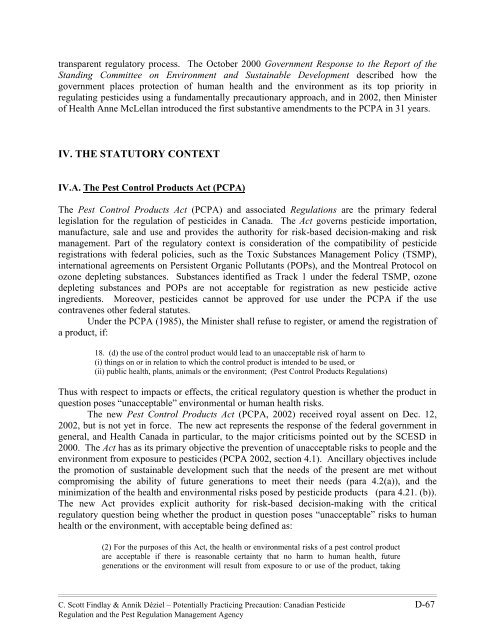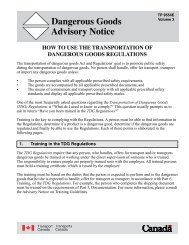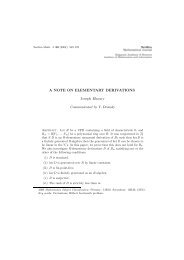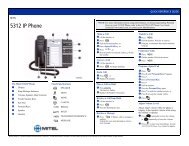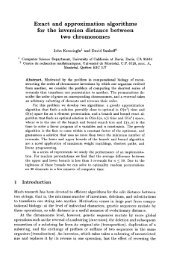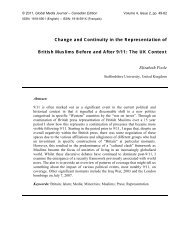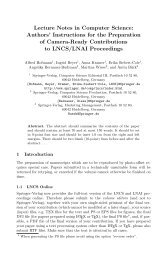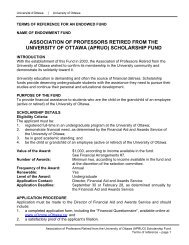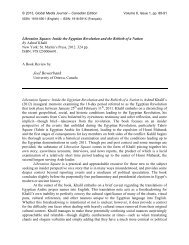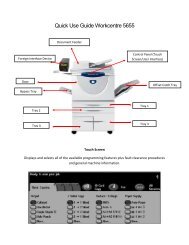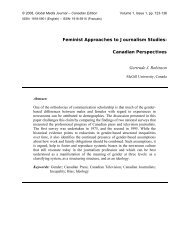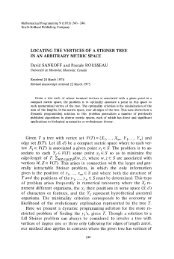PRACTICING PRECAUTION and ADAPTIVE MANAGEMENT ...
PRACTICING PRECAUTION and ADAPTIVE MANAGEMENT ...
PRACTICING PRECAUTION and ADAPTIVE MANAGEMENT ...
- No tags were found...
Create successful ePaper yourself
Turn your PDF publications into a flip-book with our unique Google optimized e-Paper software.
transparent regulatory process. The October 2000 Government Response to the Report of theSt<strong>and</strong>ing Committee on Environment <strong>and</strong> Sustainable Development described how thegovernment places protection of human health <strong>and</strong> the environment as its top priority inregulating pesticides using a fundamentally precautionary approach, <strong>and</strong> in 2002, then Ministerof Health Anne McLellan introduced the first substantive amendments to the PCPA in 31 years.IV. THE STATUTORY CONTEXTIV.A. The Pest Control Products Act (PCPA)The Pest Control Products Act (PCPA) <strong>and</strong> associated Regulations are the primary federallegislation for the regulation of pesticides in Canada. The Act governs pesticide importation,manufacture, sale <strong>and</strong> use <strong>and</strong> provides the authority for risk-based decision-making <strong>and</strong> riskmanagement. Part of the regulatory context is consideration of the compatibility of pesticideregistrations with federal policies, such as the Toxic Substances Management Policy (TSMP),international agreements on Persistent Organic Pollutants (POPs), <strong>and</strong> the Montreal Protocol onozone depleting substances. Substances identified as Track 1 under the federal TSMP, ozonedepleting substances <strong>and</strong> POPs are not acceptable for registration as new pesticide activeingredients. Moreover, pesticides cannot be approved for use under the PCPA if the usecontravenes other federal statutes.Under the PCPA (1985), the Minister shall refuse to register, or amend the registration ofa product, if:18. (d) the use of the control product would lead to an unacceptable risk of harm to(i) things on or in relation to which the control product is intended to be used, or(ii) public health, plants, animals or the environment; (Pest Control Products Regulations)Thus with respect to impacts or effects, the critical regulatory question is whether the product inquestion poses “unacceptable” environmental or human health risks.The new Pest Control Products Act (PCPA, 2002) received royal assent on Dec. 12,2002, but is not yet in force. The new act represents the response of the federal government ingeneral, <strong>and</strong> Health Canada in particular, to the major criticisms pointed out by the SCESD in2000. The Act has as its primary objective the prevention of unacceptable risks to people <strong>and</strong> theenvironment from exposure to pesticides (PCPA 2002, section 4.1). Ancillary objectives includethe promotion of sustainable development such that the needs of the present are met withoutcompromising the ability of future generations to meet their needs (para 4.2(a)), <strong>and</strong> theminimization of the health <strong>and</strong> environmental risks posed by pesticide products (para 4.21. (b)).The new Act provides explicit authority for risk-based decision-making with the criticalregulatory question being whether the product in question poses “unacceptable” risks to humanhealth or the environment, with acceptable being defined as:(2) For the purposes of this Act, the health or environmental risks of a pest control productare acceptable if there is reasonable certainty that no harm to human health, futuregenerations or the environment will result from exposure to or use of the product, takingC. Scott Findlay & Annik Déziel – Potentially Practicing Precaution: Canadian Pesticide D-67Regulation <strong>and</strong> the Pest Regulation Management Agency


